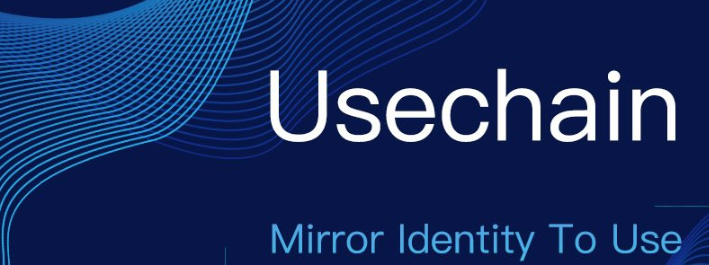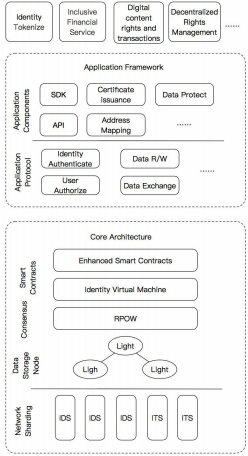
The importance of blockchain technology in today's world cannot be overemphasized. What was formerly tagged as just being used for merely bitcoin has since evolved into something greater. Blockchain technology has been evolving since its inception in 2008. It started out with the blockchain 1.0 phase, which involved the implementation of the distributed ledger technology and led to the very first application of blockchain technology.
Due to the dynamic nature of blockchain, the version 2.0 was created which was based on ethereum smart contracts. The smart contracts are a set of computer programs that help to automatically execute pre-set conditions between parties, and also lessen the cost associated with verification, execution, and adjudication thereby providing a transparent means of executing contract terms.
In furtherance, the third generation of blockchain technology came into existence (Blockchain 3.0), and was based on decentralized application (DApp) and improved smart contracts, thereby making use of decentralized storage and communication. This means decentralized applications make use of a decentralized peer-to-peer network to run their backend code as against the centralized servers that normal conventional apps use.
Despite this great development of blockchain technology, it is still discouraging to know that it still hasn't been generally accepted in most economies. This can be attributed to the fact that the typical blockchain networks have some deficiencies which inhibits it from being applicable to business demands. Some of which are low performance, poor scalability, technical difficulties when applying blockchain to business processes etc.
Below outlines the technological makeup of the current blockchain networks and how Usechain addresses each of them.
TECHNOLOGICAL FRAMEWORK OF CURRENT BLOCKCHAIN NETWORKS AND ITS DEFICIENCIES
It is truly no doubt that the typical blockchain networks such as ethereum, bitcoin, EOS etc have greatly contributed to the advancement of blockchain technology. However, their technological makeup still has some major defects which thus inhibits the integration of blockchain with real-world business applications. The technological makeup focuses mainly on anonymity, thereby making it difficult to correlate the true identity of an individual on chain address with off-chain identity. This creates an avenue for fraudsters to use the blockchain for illicit activities such as money laundering, terrorist financing etc. Due to this challenge, it becomes very difficult for conventional applications to incorporate cryptocurrencies into their operations because there will be a need for KYC and AML checks. In addition to this, is the issue of high technical difficulties. Companies still experience challenges leveraging typical blockchains because the process involved in creating normal decentralized applications that can be seamlessly deployed on existing blockchains is quite strenuous.
Taking a deeper look at the technological framework of the typical blockchain networks, their design is deeply flawed as several issues such as wasteful mining resource, long delays during processing and verification of transactions, congested network, huge synchronous data etc., have been observed to be encountered during the utilization of the typical blockchain networks.
Using the consensus algorithm as a case study, the issue of scalability, security and efficiency still remains a big challenge for the current blockchain networks. For example, the PoS is able to provide efficiency but lacks scalability and efficiency. Also, the Delegated Proof of Stake (DPoS) being used by EOS doesn't offer full decentralization because only a small number of persons take the full decision based on their stakes which in turn makes the consensus process more centralized. On the other hand, the ethereum network can easily get congested by a single large business operation, thereby resulting in longer transaction delays and high transaction fees.
These defects have further limited the application of blockchain to the general mass market.
HOW THE USECHAIN TECHNOLOGICAL FRAMEWORK AIMS TO ADDRESS THESE CHALLENGES
In order to achieve an identity-based ecosystem whereby each address on the chain will have a verifiable and matching record to an individual off-chain address, Usechain aims to improve on the shortcomings of the current blockchain networks. Usechain decided to improve on the consensus algorithm, network sharding, blockchain virtual machine, and light clients.
Consensus mechanism - On the consensus algorithm, Usechain decided to adopt the Randomized Proof of Work (RPOW) consensus algorithm. The RPOW will be the driving force of the Usechain Blockchain. The RPOW uses a verifiable random function to determine an account specific random number and then the mining probability for each account is a function of a common random number and an account specific random number. This simply means that the persons on the consensus board are always generated through a random algorithm, in order to ensure that the same persons are not always on the board every time. This offers full decentralization of the system because, at every point in time, it's a randomly different set of people.
Network congestion- To address the issue of network congestion, Usechain decided to make use of subchains to execute different applications. Though the subchains will be a generated from the principal chain, however, it will be able to provide specific and tailored services based on the needs of individuals thereby removing the issue of network clogging because each individual will be assigned a chain unlike when everyone uses the main chain itself.
Sharding technology - Current blockchains require that a full node must be maintained to verify future transactions. This directly translates to longer delays in confirming transactions which in turn affects the performance. In order to address the issue of the speed of transaction verifications, Usechain introduced the sharding technology. Usechain aims to utilize the KaZaA P2P protocol, Identity Network Sharding, and Identity Transaction Sharding to affirm transactions within the shortest period.
Usechain will execute network sharding on all the identity chain network based on each individual addresses. This means that for every transaction carried out by a particular address, it will only be verified by all the nodes in the shard that the particular address belongs to. This, therefore means that the transaction confirmation must not be done by all the nodes in the entire network. Usechain will use sharding by identity to prompt the scale and the time consumed when a transaction between sharding and the division by identity will make the transaction between shardings less, to level up the transaction. This method will enhance the speed of transaction confirmation and also help expand the magnitude of network transactions.
Light nodes- It was earlier stated in the defects of the current blockchain networks that large quantity of synced data is one of the major downsides of the current blockchain networks. However, Usechain aims to address this by making use of light nodes, by lessening the amount of synced data that occurs on the light nodes, whilst still maintaining the reliability of ratifying transactions and data on the network. The nodes who don't partake in the consensus algorithm mechanism as a full node will be utilized as light nodes. This means that even if a node is not a full node in the chain network, it still has a role to play because it will be selected as light nodes.
TECHNOLOGICAL STACK OF THE USECHAIN BLOCKCHAIN
The Usechain architecture is further divided into two major components, namely the base level chain and upper-level applications. The design of the infrastructure needed to create the innovative high performing mirror blockchain ecosystem is divided into five components namely the network layer, the consensus layer, data layer, incentive layer, and smart contract layer. All these layers all work in conjunction to provide the needed blockchain ecosystem that can be applied to the mass market.

Conclusively, I can boldly say that the technological framework of the Usechain blockchain will truly enable the identity chain to attain a huge transaction capacity that will enable it to provide support for multitudes of users concurrently, greatly improve the speed of confirming transactions and block speed, as well as enhancing virtual machines.
Kindly visit https://www.usechain.net/ for more information.
Whitepaper: https://www.usechain.net/usechain_en.pdf
ANN: https://bitcointalk.org/index.php?topic=2498919
Twitter: https://twitter.com/usechain
Writer: Sucre123456
Bitcointalk profile link: https://bitcointalk.org/index.php?action=profile;u=1820055;sa=summary
Hi! I am a robot. I just upvoted you! Readers might be interested in similar content by the same author:
https://steemit.com/blockchain/@ammier/the-first-mirror-identity-blockchain-ecosystem-usechain